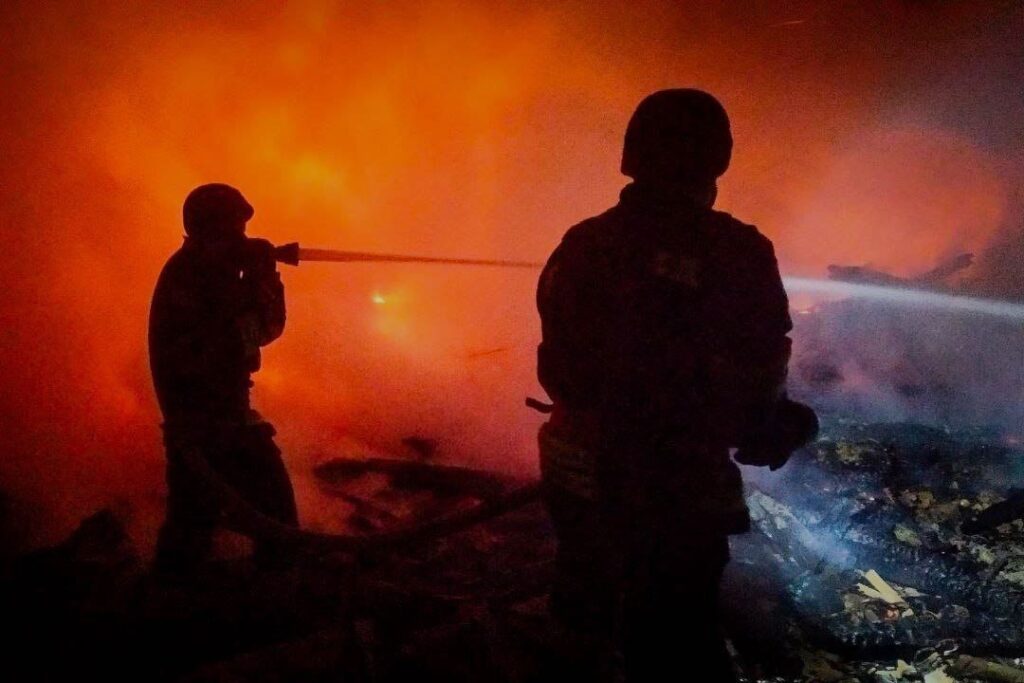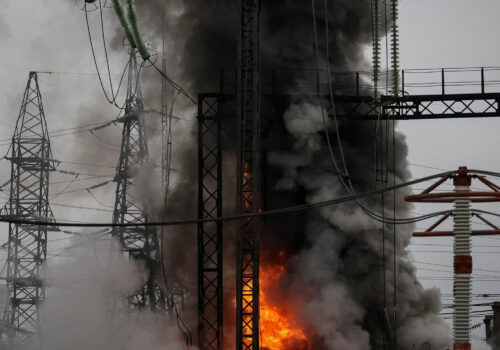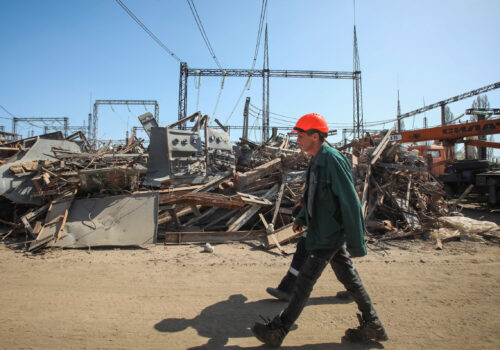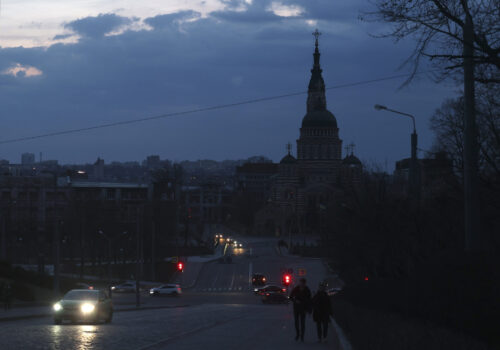In recent months, Russia has launched a major new bombing campaign targeting Ukraine’s civilian energy infrastructure. Building on key lessons learned from an earlier air offensive conducted during the first winter of the war, the current wave of Russian airstrikes has concentrated on Ukraine’s largest power plants with devastating results. Since the beginning of 2024, a large part of Ukraine’s thermal and hydro power generation capacity has been damaged or destroyed.
“Rather than continuing to focus their attacks on Ukraine’s transmission systems, from late March Russia began launching massive attacks on our energy generation infrastructure,” Maxim Timchenko, CEO of Ukrainian energy producer DTEK, told CNN. “Unfortunately, the enemy has evolved his tactics and is using high-precision weapons. The result is a huge increase in its destructive effectiveness compared to 2023.”
This is placing unprecedented pressure on Ukraine’s embattled power grid. Problems are arising not only due to a severe shortage of generation capacity, but also because the destroyed facilities played a vital role in ensuring the flexibility of the system. Fears are now growing that Ukraine will face rolling blackouts in the coming months, with potentially grave consequences for the wartime Ukrainian economy and the humanitarian situation in the country.
Ukrainian government officials and energy sector representatives anticipate that it could take years to repair the extensive damage done to power plants targeted in Russia’s recent attacks. Nor would this necessarily solve the problem. As numerous commentators have already pointed out, repaired facilities would remain vulnerable to future Russian airstrikes. Indeed, some of the plants struck since the beginning of 2024 had only recently been fixed following earlier bombardment.
Stay updated
As the world watches the Russian invasion of Ukraine unfold, UkraineAlert delivers the best Atlantic Council expert insight and analysis on Ukraine twice a week directly to your inbox.
There are alternatives to simply repairing Ukraine’s old power grid and hoping for the best. Looking ahead, many industry experts and officials favor a more diverse and decentralized model for the Ukrainian energy sector. Volodymyr Kudrytskyi, CEO of Ukrainian electricity transmission system operator Ukrenergo, recently argued that instead of relying on 15 to 20 large electricity generation facilities dating back to the 1960s and 1970s, Ukraine should be aiming to construct a nationwide network featuring hundreds of far smaller power plants.
This national energy upgrade should incorporate the latest technologies and take maximum advantage of Ukraine’s considerable renewable electricity generation capabilities. From a military perspective, it would be significantly more challenging for Russia to inflict critical damage on such a decentralized Ukrainian power grid. With a large number of potential targets spread out across the country, the cost of doing so would also likely be prohibitive.
The Ukrainian private sector can play a critical role in the transformation of the country’s energy industry. For the past two years, Ukrainian companies have demonstrated remarkable resilience in the face of Europe’s largest invasion since World War II. They have successfully adapted to incredibly challenging conditions and have overcome a wide range of obstacles, including in the energy sector. But in order to lead the way in building a new generation of power plants, the country’s energy entrepreneurs require access to the necessary financial tools.
Eurasia Center events

While Ukraine’s energy industry has received considerable financial support since 2022 from international donors and development institutions, most funding has gone to the public sector. This is understandable, given the need to keep state-run critical infrastructure functioning. However, in order to advance to the next stage, the Ukrainian authorities and the country’s international partners must look to make new projects economically viable for Ukraine’s private sector.
Without access to financing along with additional efforts to minimize the economic risks involved in new projects, the large-scale construction of decentralized energy facilities is unlikely to happen. Ukraine’s state-owned energy companies are already occupied with the restoration of their existing assets, and are not realistically in a position to embark on dozens of new projects in parallel. Providing access to financing could help spur competition within the Ukrainian private sector and pave the way for significant investment.
Much of the financial support for Ukrainian energy initiatives currently comes from international financial institutions. At present, many of Ukraine’s largest private sector players do not meet their criteria, while others are too small to appear on their radar. With little prospect of overcoming financial obstacles, some Ukrainian energy sector companies are already turning their attention to more economically viable projects outside Ukraine. Unless the situation changes, others may follow.
Financing the decentralization of Ukraine’s energy sector should be recognized as a strategic priority. Russia is clearly aiming to destroy the Ukrainian power grid and hopes this will break the country’s ability to resist. Withstanding the Russian attack on Ukraine’s energy infrastructure is therefore vital for the wider war effort. The Ukrainian private sector is a logical partner in this undertaking, but needs access to the financial tools that only the country’s international partners can provide. To paraphrase Winston Churchill, “Give Ukrainian entrepreneurs the financial tools, and they will finish the job.”
Yuri Kubrushko is co-founder of the Green Recovery Fund.
Further reading
The views expressed in UkraineAlert are solely those of the authors and do not necessarily reflect the views of the Atlantic Council, its staff, or its supporters.

The Eurasia Center’s mission is to enhance transatlantic cooperation in promoting stability, democratic values and prosperity in Eurasia, from Eastern Europe and Turkey in the West to the Caucasus, Russia and Central Asia in the East.
Follow us on social media
and support our work
Image: Emergency units carry out rescue tasks after a new Russian attack. At least three people died and three others are missing as a result of the massive Russian attack against Ukraine, in which fifteen people have been injured, according to reports provided by the Ukrainian authorities.




